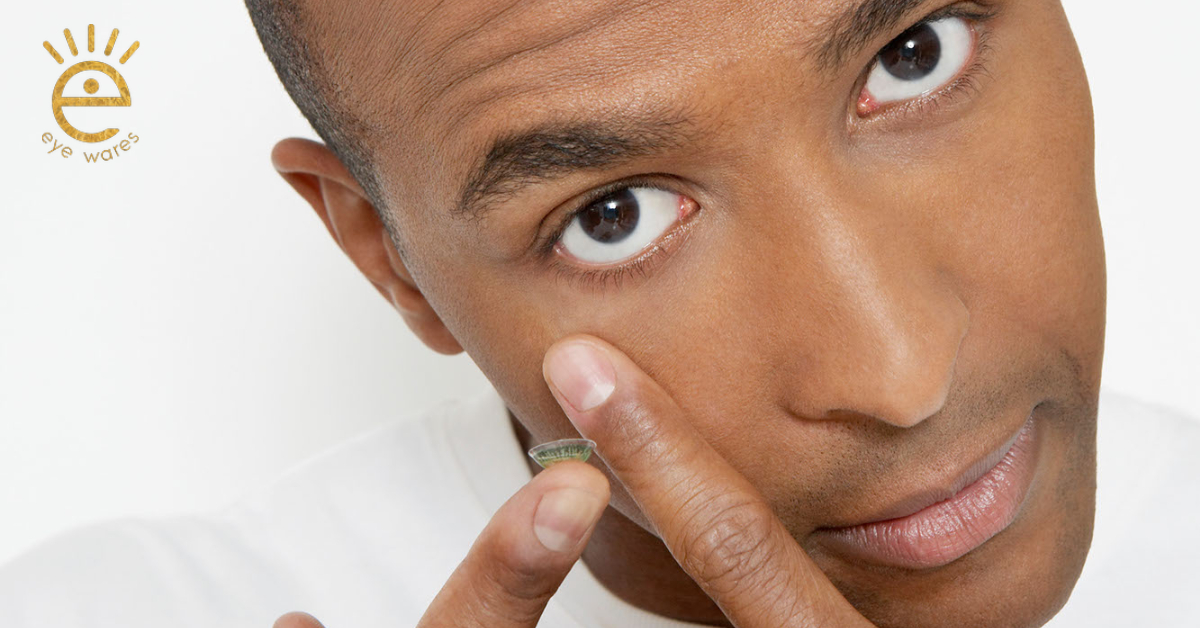Contact Lens Care and How To Use Them Properly
Approximately 45 million people in the country wear contact lenses. Contact lenses offer more natural vision than glasses. They don’t block what you see, fog up, get wet, or get in the way of your physical activities. But, with contact lenses come responsibilities.
They require much more care than glasses and pose more risks with improper use. At Eye Wares, we help you maximize the advantages of contact lenses without risking your eye health!
Importance of a Contact Lens Exam and Contact Lens Fitting
Anyone interested in wearing contact lenses must know how important it is to go through a contact lens exam. You need an eye doctor to perform the tests that evaluate whether contact lenses are right for your eyes.
Every eye shape is different, so one contact lens size does not fit all! A contact lens exam will measure the following to find out the best contact lens design and fit:
- Corneal curvature
- Pupil and iris size
- Tear film evaluation
A contact lens exam will fit your new lenses properly to your eyes. A contact lens that does not fit your eye well can cause discomfort, blurry vision, and eye damage. You can only get a contact lens prescription after an exam!
Moreover, a contact lens fitting after the exam allows your doctor to verify that your contact lenses will be comfortable and clear. Your eye doctor can adjust your prescription to ensure you get the best vision possible with your contact lenses.
Type of Contact Lenses
You can’t simply go to the store and purchase a pair when you decide to use contact lenses. Contact lenses come in different types, and there’s one that’s best for you depending on your needs.
Soft Contact Lenses
Soft contact lenses are a soft and flexible plastic material. Plastic material allows oxygen to pass through to your cornea. Many people prefer soft contacts because they find this material easier to adjust to than rigid gas permeable material.
Rigid Gas Permeable (RGP) Contact Lenses
Rigid gas permeable (RGP) or hard contact lenses are more durable than the other material. They provide a clear and crisper vision and are less likely to tear. However, they are more complicated to clean, or disinfect, than soft contact lenses.
Contact lens types also depend on your wear schedule, meaning they can be either of the following:
- Daily Wear: These contact lenses are for use during the day, or while awake, not for when you are sleeping. You must remove them before sleeping for cleaning to avoid eye infections.
- Extended Wear: Soft plastics that allow more oxygen to pass through to your cornea. You can wear them while sleeping for up to 30 days, depending on your contact lens type and tolerance.
Eye doctors can also prescribe contact lenses that rely on a replacement schedule. These disposable daily contact lenses must be thrown away after one use. You must wear a brand-new pair each day to avoid complications.
Other disposable contact lenses can be used more than once as long as you remove them before sleeping. You may use these contact lenses for up to 30 days. Lastly, other contact lenses, like hybrid, Orthokeratology (Ortho-K), and decorative, are for eye disease treatment and color enhancement.
How To Put in Contacts
Some people avoid contact lenses because they fear touching or putting objects in their eyes. Touching your eye with a thin lens can be daunting! However, with practice, putting in contact lenses becomes second nature.
Wondering how to put contacts in? Follow these nine steps:
1. Wash your hands thoroughly and dry them.
2. Get the contact lens from the case and rinse it with a contact lens solution. Note: Never use tap water or regular water!
3. Place the lens on the tip of the index or middle finger of your dominant hand.
4. Check whether the lens edges are turned up, forming a bowl. This means it will be inserted inside out. Gently flip it.
5. Look in the mirror and open your eyelids with your free hand.
6. Look in front of you or up to the ceiling.
7. Gently place the contact lens in your eye.
8. Close your eye and roll it around to help the lens settle in place until it feels comfortable.
9. Repeat with the other contact lens.
Some people may teach you a different method when you ask them how to put in contact lenses. Generally, you must ensure your hands and the lenses are clean before you wear them. Also, contact lenses must always face the correct side; if they feel uncomfortable, you can remove and replace them.
How To Get Contacts Out
Now that you know the easiest way to put in contacts, here’s the easiest way remove your contact lenses. If you’re wondering how to get contacts out, follow these seven steps:
1. Wash your hands thoroughly and dry them.
2. Look in the mirror and open your eyelids with your hand.
3. Look up. Use the index finger of your dominant hand to pull the lens down to the white part of your eye.
4. Pinch the lens and remove it from your eye.
5. Place the lens in the palm of your hand and clean it with a contact lens solution for 30 seconds.
6. Rinse and place the contact lens in the case with a contact lens solution.
7. Repeat with the other lens.
Taking Proper Care of Contact Lenses
Following your doctor’s instructions for contact lens care and wear is best. However, here are some Do’s and Don’ts to follow so you can get the most from your contact lenses:
Do’s
- Do wash and dry your hands before wearing and removing lenses
- Do store lenses in disinfecting solution
- Do rinse your case with saline solution
- Do replace your case every three months
- Do keep your nails short or use only your fingertips when wearing or removing lenses
Don’ts
- Don’t wear lenses longer than prescribed
- Don’t store lenses in saline
- Don’t reuse disinfecting solution
- Don’t use water to clean or store lenses
- Don’t sleep in your contact lenses
- Don’t go underwater with your lenses in
How To Tell If a Contact Lens Is Still in Your Eye
You may hear someone say, “My contact lens is lost in eye!” If you’ve never worn contacts, this may sound strange or even scary. Luckily, it’s easy to retrieve if it is there.
To determine if a contact lens is still in your eye, look in the mirror. Check the eye area where the dark and white parts meet. If you can’t see your contact lens, flip your upper eyelid to see if it’s there. You can apply rewetting drops to flush it out.
If you’ve lost a contact lens or have any contact lens concerns, you can always search “eye doctor near me”. Whether you have defective contact lenses that are difficult to insert or remove or lenses that cause grittiness, it’s time for an “optometrist near me” search!
The Benefits of Eye Wares Contact Lens Fittings
For people in New Orleans, Metairie, and Mandeville searching for “contact lens near me,” the answer is Eye Wares! We have a simple process for contact lenses fittings and assessments, especially in hard-to-fit individuals. Our team determines accurate eye measurements, ensuring you find the perfect contact lens fit for your eyes.
An Eye Wares contact lens fitting also includes tear film evaluations to help confirm that your eyes produce enough moisture. We’re also ready to answer any of your questions and teach you how to put contact lenses in! With us, you can see and be seen. Book that “contact lens exam near me” now!


